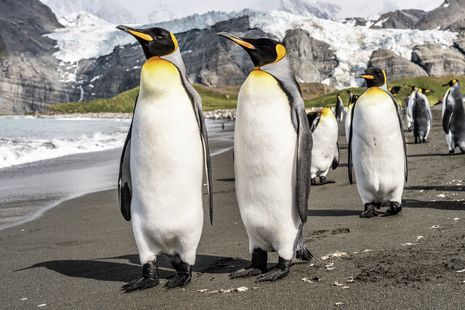Research Round-up: Week 5
Science Editors, Suchir Salhan and Tom Malloch, break down the ground-breaking scientific research produced by the University this Week 5

150kg? Discovering the largest penguin that ever lived
An international team, including researchers from the University of Cambridge, have unearthed found fossil bones from two newly-described penguin species in New Zealand. One of them is thought to be the largest penguin to ever live – weighing more than 150 kilograms, more than three times the size of the largest living penguins. Daniel Field, who is also the Curator of Ornithology at Cambridge’s Museum of Zoology remarked that these “future fossil discoveries will shed more light on the biology of this amazing early penguin.”
Uncovering healthcare inequalities of trans and non-binary adults
A team led by researchers at University’s Department of Public Health and Primary Care has found that Trans and non-binary adults are more likely than the general population to experience long-term health conditions, including mental health problems, dementia and learning disabilities, and to be autistic. First author Dr Katie Saunders, a statistician working in the Cambridge Centre for Health Services Research, said that “knowing that a trans or non-binary patient is more likely to be autistic or to be experiencing mental health difficulties, for example, where guidelines do exist, could help GPs prepare for seeing their patients.”
Breakthrough in understanding Greenland Ice Sheets
An international team of researchers, led by the University of Cambridge, have found that the movement of glaciers in Greenland is more complex than previously thought. The formation in regions of warmer ice containing small amounts of water accounts for motion that had often been assumed to be caused by sliding where the ice meets the bedrock beneath. They hope to use this improved understanding to build more accurate descriptions of ice motion for the ice sheet models used in predicting future sea level rise.
Cambridge advancing abiogenesis
The famous Miller experiment of the 1950s was the first attempt to probe for the chemical origin of life. A new Cambridge-US study has tweaked the standard approach taken in these efforts, by using precisely contaminated “sea water” – adding a mix of salt and other minerals to the usual distilled water.
The researchers found evidence for the production of amino acids,sugars like glucose and ribose, peptides, long chain fatty acids,, and even detections of ATP – a key mechanism for intracell energy transfer – within 5 weeks.
The paper indicates these results do not seem to have been achieved under one set of conditions before. They point to “dirty chemistry” being a potential way forward to probe the science of early life further, though they also point out that more techniques will be needed additionally, not least by changing the environmental selection pressures simulated by experiment.
Going straight to your head
Engineers from Cambridge have successfully implemented a method to analyse the efficacy of certain drug delivery systems.
Treatment of many diseases, including brain cancers, are hampered by the difficulty drugs have crossing the blood-brain barrier. Medical science has found ways around this problem, including microdialysis injections; this involves a small needle that can inject medication locally with an outflow route to prevent overflow in the intracranial space.
Dose concentration and delivery rate are key considerations, and can understandably be a lengthy and costly process to finalise. By building a model brain out of agarose gel, the researchers were able to effectively replicate current models of microdialysis delivery, with some deviations at low and high flow rates.
It is hoped similar, easily producible and replaceable models can help speed up the early stages of probe design, improving treatment for patients.
 News / Eight Cambridge researchers awarded €17m in ERC research grants27 December 2025
News / Eight Cambridge researchers awarded €17m in ERC research grants27 December 2025 News / Downing investigates ‘mysterious’ underground burial vault 29 December 2025
News / Downing investigates ‘mysterious’ underground burial vault 29 December 2025 Lifestyle / Ask Auntie Alice29 December 2025
Lifestyle / Ask Auntie Alice29 December 2025 Sport / Hard work, heartbreak and hope: international gymnast Maddie Marshall’s journey 29 December 2025
Sport / Hard work, heartbreak and hope: international gymnast Maddie Marshall’s journey 29 December 2025 Interviews / Meet Juan Michel, Cambridge’s multilingual musician29 December 2025
Interviews / Meet Juan Michel, Cambridge’s multilingual musician29 December 2025










